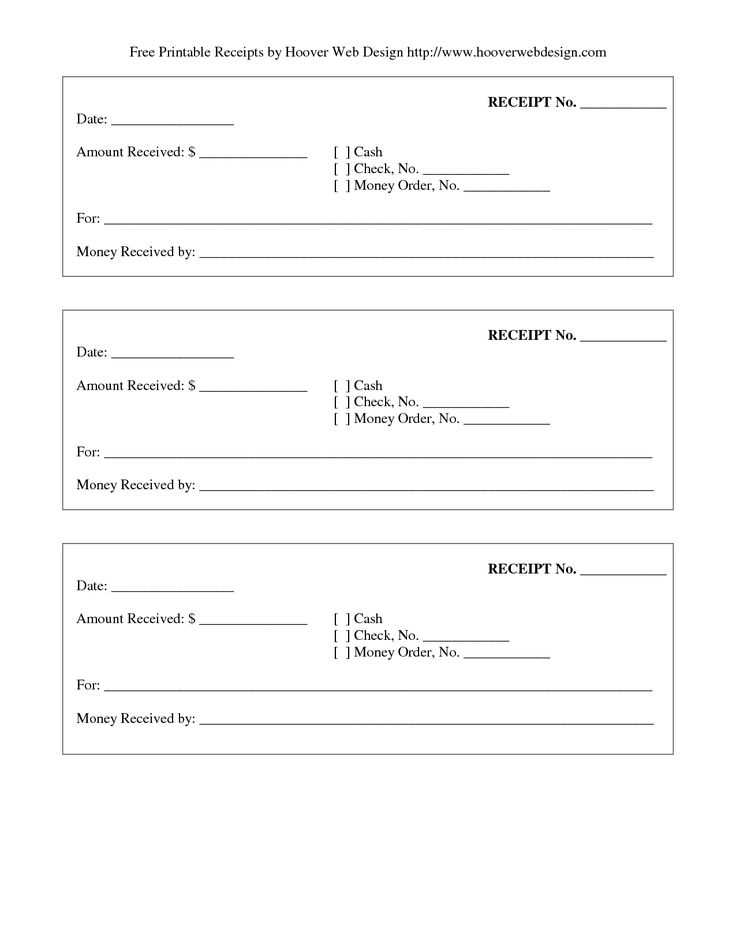
Creating an exterminator receipt is a straightforward process. Ensure all required details are clearly listed to avoid any confusion. A proper receipt serves both as a proof of service for the customer and a record for the exterminator. Below, you will find key elements to include in your template.
Customer Information should be clearly displayed at the top. Include the customer’s name, address, phone number, and email address. This ensures the receipt is easily traceable to the correct person. Make sure to double-check these details to avoid any discrepancies.
Service Details are the core of the receipt. Specify the service provided, including the type of treatment (e.g., pest control, rodent extermination), location of service, and the exact date and time. This section provides transparency for both parties.
Payment Information should be broken down into itemized sections. Include the total amount charged, payment method (e.g., credit card, cash, check), and any applicable taxes. If there are any discounts or special offers, list them separately. This gives a complete view of the transaction.
Lastly, include a terms and conditions section, where you can outline any warranties or follow-up procedures related to the service. This provides reassurance to the customer and clarifies what actions will be taken if issues arise after the service.
Exterminator Receipt Template

To create an accurate and clear exterminator receipt template, include the following key elements:
- Business Details: Name, address, phone number, and email address of the extermination service provider.
- Customer Information: Full name, address, and contact details of the client.
- Service Date: Date the pest control service was provided.
- Service Description: A detailed list of services performed, such as pest treatment, inspection, or prevention. Include the type of pests addressed.
- Cost Breakdown: Itemized charges for each service performed, including materials, labor, and any additional fees.
- Payment Method: Specify the method of payment, whether cash, card, or check.
- Total Amount: The total amount due for the service, including applicable taxes.
- Technician Name: Name of the technician who performed the service.
- Signature Section: Space for both the technician and customer to sign, confirming the service was completed and payment received.
Ensure the format is clean and professional to provide a clear record for both parties. This template will also help maintain a transparent financial record for future reference.
Key Information to Include in an Exterminator Receipt
Always include the company name, address, and contact details. This ensures clarity for the customer regarding who performed the service and how to reach them if needed.
Specify the date of service and the duration of the treatment. This helps the customer track the timeline and assess the service provided.
Include a detailed list of the services rendered. Be specific about the type of pest control used and the areas treated. This transparency builds trust and avoids confusion later.
Clearly state the total cost, breaking it down into individual charges for each service. A breakdown of materials, labor, and any additional fees ensures customers understand the charges.
If applicable, mention any warranties or follow-up visits. This shows the customer what to expect if further action is needed after the initial treatment.
Provide payment details, including the method used and any applicable tax information. This adds clarity to the transaction and ensures the customer has a full record.
Finally, include a receipt or invoice number for future reference. This helps with organization and tracking of payments or potential disputes.
Customizing the Template for Different Types of Extermination Services

Adjust the receipt template to suit the specific type of extermination service provided. For pest control services, include details about the type of pests treated, the method used, and the number of treatments performed. Specify whether it was a one-time service or part of an ongoing program.
For rodent control, list the inspection process, the number of traps set, and the number of rodents removed. Highlight any follow-up visits scheduled. If the service involves fumigation, mention the chemicals used and the area treated, including safety measures provided to the client.
In cases of termite control, indicate the treatment method–whether baiting, liquid treatment, or heat treatment–and outline the area covered. Be specific about any warranty or ongoing monitoring included in the service. This helps clarify the scope of the service and gives clients an idea of the long-term care they can expect.
For wildlife removal, provide clear descriptions of animals targeted, whether they were trapped, relocated, or removed. Include any additional charges, such as for damage repairs or preventive measures taken to ensure animals do not return.
Ensure the template includes space for detailed service descriptions, pricing breakdowns, and follow-up instructions. This transparency builds trust with clients and keeps them informed about the services rendered.
Legal Requirements and Best Practices for Exterminator Receipts
Exterminators must ensure their receipts comply with local regulations and contain specific information. These elements not only provide transparency but also protect both the customer and the service provider. Every receipt should clearly state the services rendered, the cost breakdown, and any applicable taxes. This enables customers to confirm what they are being charged for and ensures businesses maintain proper accounting records.
Key Legal Elements
Receipts should include the full name and contact details of the exterminator company, including business registration information if required by law. The date of service must be specified, alongside a detailed description of the pest control work performed. Additionally, some jurisdictions mandate that the receipt must include an explicit reference to the chemicals or methods used, especially if they are regulated substances.
Best Practices for Clear and Transparent Receipts

To improve customer satisfaction and prevent disputes, make sure that all fees are itemized. Use a clear format for charges, including labor, materials, and any additional fees. The use of a professional receipt template can ensure consistency and reliability in every transaction. It’s also a good idea to include a warranty or follow-up information, letting the customer know what actions to take if further pest control is needed.


